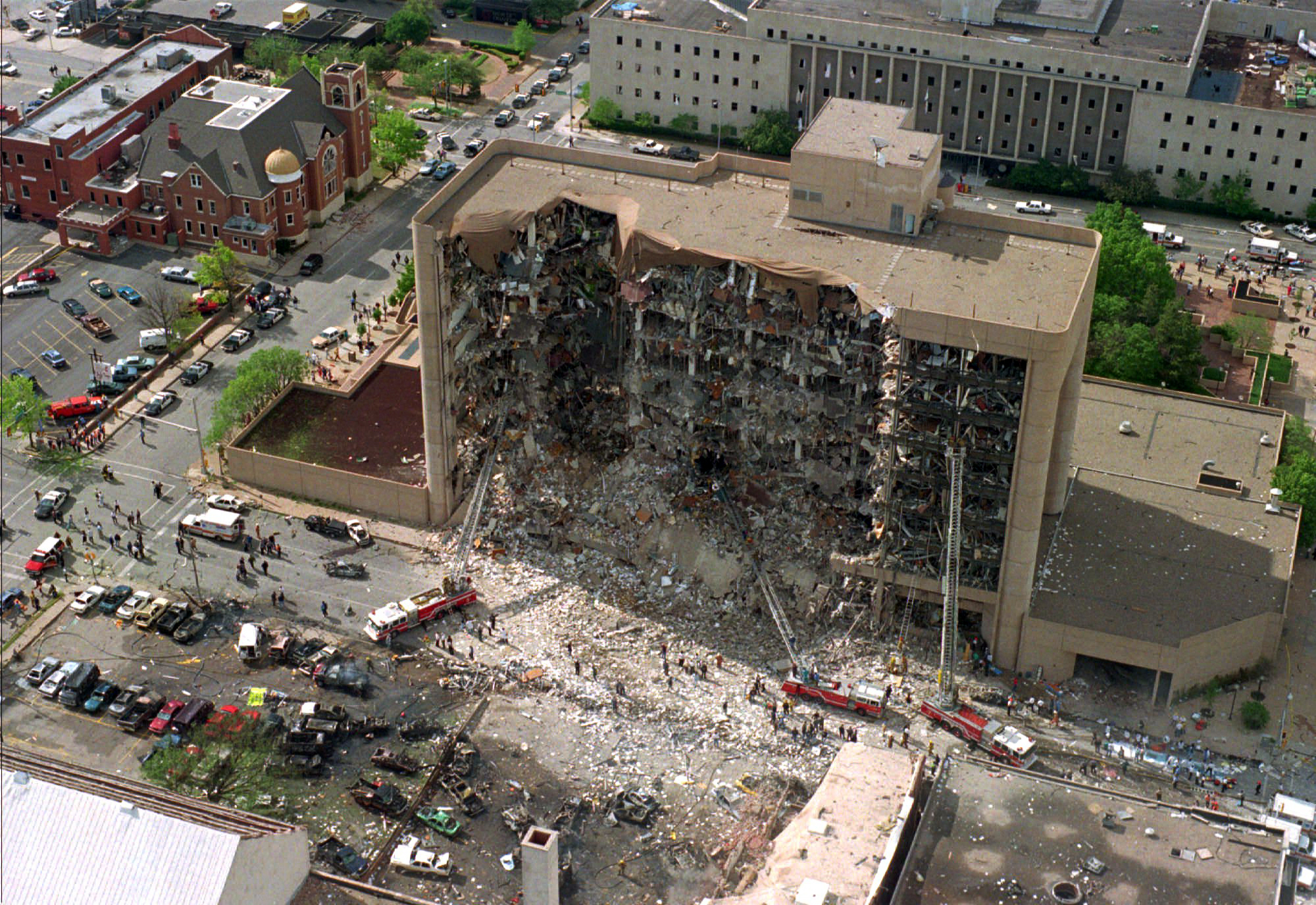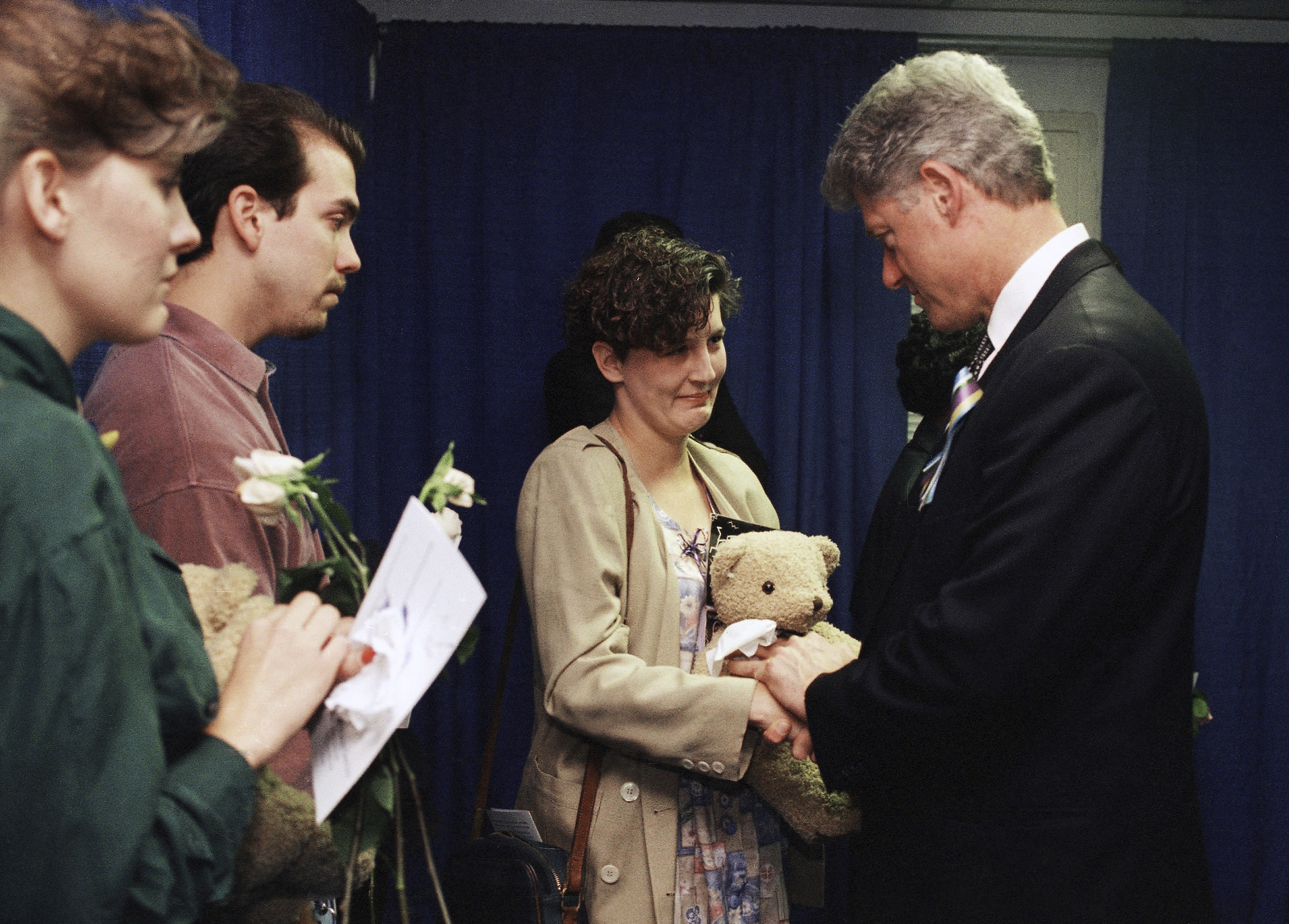Oklahoma City Bombing 30 Years: Remembering the Victims
Oklahoma City Bombing: Remembering the Day America Changed
A City Remembers: Introduction
A bomb with a force powerful enough to instantly destroy much of a nine-story building shattered a quiet Oklahoma City morning and sent a shock wave through America on April 19, 1995. It was a day etched forever in the nation’s memory – a day when innocence was lost and a city, and indeed a nation, was forced to confront the depths of human cruelty.
Saturday marks the 30th anniversary of the Oklahoma City bombing, the deadliest homegrown attack in United States history that exposed a dark undercurrent of anti-government extremist anger. Thirty years have passed, but the pain remains palpable. The scars, though perhaps faded, are still visible on the landscape, both physical and emotional.
This isn't just a historical event; it's a living memory. It’s a story of resilience, community, and the enduring power of the human spirit in the face of unimaginable tragedy. Are we ready to delve into the details and understand the lasting impact of that fateful day?
Remembering the Victims: A Sacred Duty
A public ceremony to mark the anniversary at the Oklahoma City National Memorial Museum will include the reading of the names of the 168 people killed, remarks by victim family members and survivors, and a keynote address by former President Bill Clinton. This is a solemn occasion, a time for reflection and remembrance.
The Faces of Loss
The dead ranged in age from three months to 73 years old. Nineteen of them were children. Hundreds more were injured. Think about that for a moment. Nineteen children. It’s a statistic that refuses to become just a number. Each life lost was a universe of potential, a tapestry of dreams cut short. We must never forget their names, their faces, their stories.
A Building of Hope and Bureaucracy
The building that was bombed — the Alfred P. Murrah federal complex — included regional offices for several agencies, including the Social Security Administration. It was a place where people went to work, to serve their community, to build a better future. It was a symbol of government, yes, but also a symbol of hope and security for those who relied on its services.
The Day the World Changed: April 19, 1995
April 19, 1995, began like any other day in Oklahoma City. The sun rose, people headed to work, and children prepared for school. But at 9:02 a.m., everything changed. The explosion ripped through the Murrah Federal Building, leaving a gaping hole in the structure and an even larger hole in the heart of America.
The Immediate Aftermath: Chaos and Compassion
The immediate aftermath was one of chaos and confusion. First responders rushed to the scene, battling through smoke and debris to rescue survivors. Ordinary citizens, without hesitation, joined in the effort, demonstrating the true meaning of compassion. The images of that day – the rubble, the tears, the heroic rescues – are forever seared into our collective memory.
The Search for Answers: An Investigation Begins
Almost immediately, the search for answers began. Who could commit such a heinous act? Why would they target innocent civilians? The investigation quickly focused on domestic terrorism, uncovering a network of anti-government extremists fueled by hate and anger.
Timothy McVeigh and Terry Nichols: The Perpetrators
Timothy McVeigh and Terry Nichols were identified as the perpetrators of the bombing. Their motives were rooted in anti-government ideology and a desire to avenge the Waco siege of 1993. Their actions were a stark reminder that extremism can fester even in the heartland of America.
McVeigh's Ideology: A Descent into Extremism
McVeigh’s path to extremism was complex and disturbing. He was a decorated Gulf War veteran who became disillusioned with the government and embraced radical ideologies. His story serves as a cautionary tale about the dangers of unchecked anger and the allure of extremist rhetoric.
Justice Served? The Trials and Consequences
Both McVeigh and Nichols were brought to justice for their crimes. McVeigh was convicted and executed in 2001. Nichols was sentenced to life in prison. But did their punishment truly bring closure? Can justice ever fully compensate for the loss of so many innocent lives?
The Oklahoma City National Memorial Museum: A Place of Remembrance
The Oklahoma City National Memorial Museum stands as a powerful tribute to the victims, survivors, and rescuers of the bombing. It’s a place of remembrance, reflection, and education. It is a place where history is preserved, and lessons are learned.
The Outdoor Symbolic Memorial: A Silent Testimony
The Outdoor Symbolic Memorial is a poignant and moving tribute. The Field of Empty Chairs, each representing a life lost, is a powerful symbol of the devastation caused by the bombing. The Survivor Tree, miraculously surviving the blast, represents resilience and hope. The Reflecting Pool offers a space for quiet contemplation and remembrance.
The Museum Experience: Telling the Story
The museum experience takes visitors on a journey through the events of April 19, 1995, and its aftermath. It features artifacts, photographs, and personal stories that bring the tragedy to life. It’s an emotional experience, but an important one, reminding us of the importance of vigilance and compassion.
The Enduring Impact: Lessons Learned and Moving Forward
The Oklahoma City bombing had a profound and lasting impact on America. It changed the way we think about terrorism, security, and community. It taught us the importance of vigilance, compassion, and resilience.
Strengthening Security: A New Era of Vigilance
In the wake of the bombing, security measures were significantly strengthened across the country. Federal buildings became more heavily guarded, and awareness of potential threats increased. This tragedy forced us to confront the reality of domestic terrorism and the need to protect ourselves from future attacks.
The Power of Community: Coming Together in Crisis
The Oklahoma City bombing also demonstrated the incredible power of community. In the face of unimaginable tragedy, people came together to support each other, to rebuild, and to heal. It was a testament to the resilience of the human spirit and the importance of solidarity in times of crisis.
Preventing Future Tragedies: Education and Understanding
Perhaps the most important lesson of the Oklahoma City bombing is the need to prevent future tragedies. This requires education, understanding, and a commitment to combating hate and extremism. We must learn from our past mistakes and work together to build a more peaceful and just world.
Remembering the Heroes: Ordinary People, Extraordinary Courage
In the midst of the chaos and devastation, countless heroes emerged. First responders, medical personnel, volunteers – all risked their lives to help others. Their courage and selflessness serve as an inspiration to us all.
The First Responders: Running Towards Danger
The first responders were the first to arrive on the scene, facing unimaginable conditions. They worked tirelessly to rescue survivors, often at great personal risk. Their bravery and dedication saved countless lives.
The Volunteers: A Community United
Volunteers from across the country poured into Oklahoma City to offer their assistance. They provided food, shelter, medical care, and emotional support to the victims and their families. Their generosity and compassion demonstrated the true spirit of America.
The Role of the Media: Covering the Tragedy
The media played a crucial role in covering the Oklahoma City bombing, informing the public about the events as they unfolded and providing a platform for victims and survivors to share their stories. However, the media also faced criticism for its sensationalism and potential to fuel fear and division.
Responsibility and Ethics: A Fine Line
Covering a tragedy like the Oklahoma City bombing requires a high degree of responsibility and ethical considerations. The media must balance the need to inform the public with the need to protect the privacy and dignity of the victims and their families. How can we ensure that media coverage of tragedies is both informative and sensitive?
The Psychological Impact: Healing the Invisible Wounds
The Oklahoma City bombing had a profound psychological impact on the survivors, the victims’ families, and the community as a whole. Many people experienced post-traumatic stress disorder (PTSD), anxiety, and depression. Healing the invisible wounds of trauma is a long and difficult process.
Therapy and Support: Finding a Path to Recovery
Therapy and support groups played a vital role in helping people cope with the psychological aftermath of the bombing. These resources provided a safe space for people to share their experiences, process their emotions, and learn coping strategies.
Oklahoma City Today: A City Reborn
Thirty years after the bombing, Oklahoma City has emerged as a vibrant and thriving city. It has rebuilt, renewed, and learned from its past. The scars of the tragedy remain, but they serve as a reminder of the city’s resilience and determination.
Growth and Progress: A City on the Rise
Oklahoma City has experienced significant growth and progress in recent years. New businesses have opened, tourism has increased, and the city’s economy has diversified. It is a testament to the city’s ability to overcome adversity and embrace the future.
The Future of Remembrance: Ensuring the Story is Never Forgotten
As the years pass, it becomes increasingly important to ensure that the story of the Oklahoma City bombing is never forgotten. We must continue to educate future generations about the tragedy, its victims, and its lessons.
Passing on the Legacy: Education and Awareness
Educational programs, museum exhibits, and community events can help to keep the memory of the Oklahoma City bombing alive. By sharing the story with future generations, we can ensure that the lessons of the tragedy are never forgotten.
Conclusion: Never Forget
The Oklahoma City bombing was a horrific tragedy that shook America to its core. It was a day of immense loss, but also a day that revealed the strength and resilience of the human spirit. As we mark the 30th anniversary, let us remember the victims, honor the survivors, and commit ourselves to preventing such tragedies from ever happening again. Let us never forget.
Frequently Asked Questions
- What exactly happened on April 19, 1995, in Oklahoma City?
On April 19, 1995, a truck bomb detonated outside the Alfred P. Murrah Federal Building in downtown Oklahoma City. The explosion caused extensive damage and resulted in the deaths of 168 people, including 19 children.
- Who was responsible for the Oklahoma City bombing?
Timothy McVeigh and Terry Nichols were responsible for the Oklahoma City bombing. They were motivated by anti-government sentiments and a desire to avenge the Waco siege of 1993.
- What is the Oklahoma City National Memorial & Museum?
The Oklahoma City National Memorial & Museum is a memorial dedicated to the victims, survivors, rescuers, and all those affected by the Oklahoma City bombing. It includes an outdoor symbolic memorial and an interactive museum that tells the story of the tragedy and its aftermath.
- How did the Oklahoma City bombing impact security measures in the United States?
The Oklahoma City bombing led to significant improvements in security measures at federal buildings and other public places across the United States. It also raised awareness of the threat of domestic terrorism and the need for increased vigilance.
- What can we learn from the Oklahoma City bombing?
The Oklahoma City bombing taught us the importance of community, resilience, and compassion in the face of tragedy. It also underscored the dangers of hate and extremism and the need to promote understanding and tolerance.

